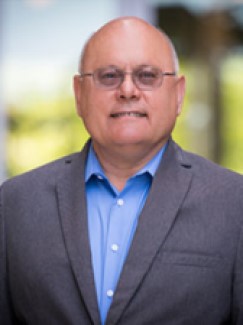Dr. Vitali Nesterenko
University of California, San Diego
Seminar Information
EBU2, Room 479

Presentation will describe history of discovering new wave dynamics in discrete strongly/essentially nonlinear metamaterials which can be characterized as "sonic vacuum". This term emphasizes that sound does not propagate, and acoustic impedance does not exist in these systems. Granular assemblies with Hertzian interaction between particles were the first examples of such behavior investigated theoretically and experimentally. This system is probably the only one where different dynamic response can be realized described by (a) nondispersive classical wave equation, (b) dispersive linear Boussinesq wave equation, (c) weakly nonlinear Boussinesq or /KdV wave equations and (d) strongly nonlinear wave equation. The ratio of the wave amplitude and static precompression controlling degree of nonlinearity allows selection of the specific dynamic response. Strong nonlinearity with elastic hardening supports propagation of new compression solitary waves while elastic softening results in rarefaction solitary waves. These solitary waves are qualitatively different in comparison with weakly nonlinearity solitary waves. Strongly nonlinear monotonous or oscillatory shock waves can also propagate depending on the level of dissipation. High level of dissipation (chain of lead beads or chain of toroidal elements (Nitrile O-ring) and rigid steel cylinders) support monotonous shock waves and do not support solitary waves despite stronger than the Hertzian-type nonlinearity of interaction force between masses. Metamaterials based on tensegrity concepts and the corresponding unusual wave dynamics under impact loading will be considered. Potential applications may include tunable acoustic delay lines, pulse trapping, tunable transfer through interfaces (acoustic diode), sensors, harvesting of mechanical energy, protection against contact explosion and impact, acoustic lenses. Strongly nonlinear behavior of discrete mechanical systems can be extended to other systems, e.g., electrical transmission lines, series connected discrete Josephson transmission lines.
Vitali F. Nesterenko received his Ph.D. in 1975 and Doctor in Physics and Mathematics in 1989 from Russian Academy of Sciences (RAS), Novosibirsk. Professor Nesterenko's research interests include meso/micromechanics of powder deformation under dynamic and quasi-static high-pressure loading; shear instability in heterogeneous materials; shear induced chemical reactions in condensed materials; wave propagation in highly nonlinear granular and heterogeneous materials; shock mitigation; mechanics of densification and sintering of advanced ceramics and alloys. He pioneered the theoretical and experimental research in strongly nonlinear discrete metamaterials suggesting new wave equation which has a qualitatively new solitary wave solution with now famous cos 4 profile. His group has successfully processed and tested a new high-gradient heterogeneous material based on titanium alloy for ballistic applications and W-fiber reinforced Al energetic materials with highly ordered mesostructure inducing controlled small scale fragmentation necessary for subsequent reaction. Professor Nesterenko and his co-authors developed a high pressure/temperature processing method for bulk magnesium diboride with best critical current suitable for size scaling and complex shapes. He is the author of the book "High- Rate Deformation of
Heterogeneous Materials", Springer, NY, 2013. He joined UCSD in 1994 as visiting Research Scientist and in 1996 as faculty. Professor Nesterenko served as a Director of Materials Science and Engineering graduate program (1999-2003) and Chair of the Department of Mechanical and Aerospace Engineering ((Acting Chair: 7/1998 –12/1998; Chair: 7/2014-6/2017). He is a Fellow of the American Physical Society with citation “For pioneering
contribution to strongly nonlinear wave propagation in granular materials, through the discovery of a new solitary wave and to shock (localized shear) mesomechanics in porous and heterogeneous media”.
